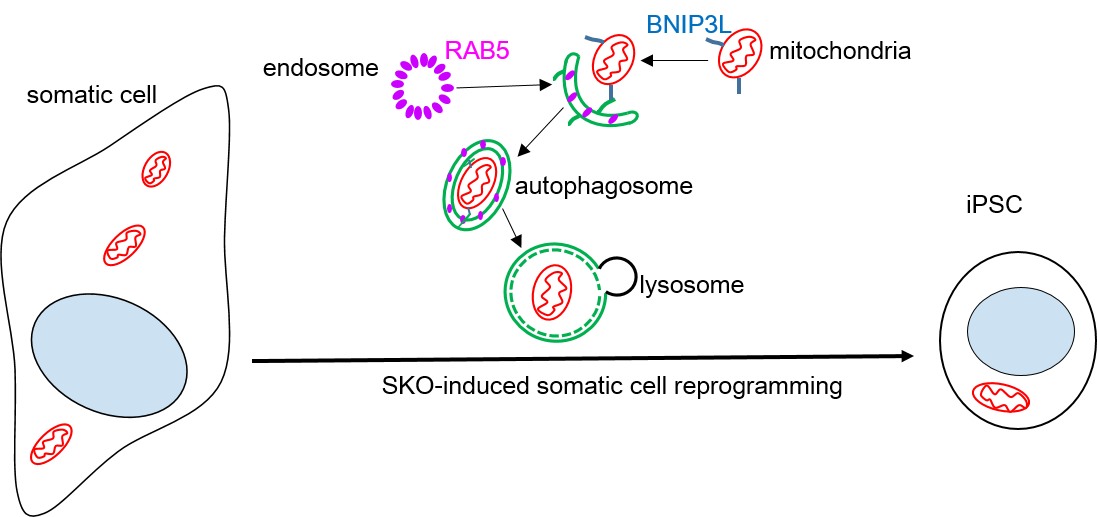Chinese Scientists discovered the rules for organelle remodeling during pluripotency acquirement
On July 19, Xingguo Liu’s lab at the Guangzhou Institutes of Biomedicine and Health (GIBH) published an article online entitled “BNIP3L-dependent Mitophagy Accounts for Mitochondrial Clearance during Three Factors Induced Somatic Cell Reprogramming” in Autophagy. Based on somatic cell reprogramming induced by SKO (Sox2, Klf4, Oct4), scientists discovered the rules for membrane trafficking and organelle remodeling during the acquirement of pluripotency. Researchers showed that the interorganellar interactions of endosome, autophagosome and mitochondria contribute to the organelle remodeling and functional shift during the generation of.induced pluripotent stem cells (iPSCs).
Cells are made up of a variety of organelles which are constructed by membrane and these organelles communicate with each other by membrane trafficking. Organelles inside cells including mitochondria, endosomes, autophagosomes and lysosomes have specialized structure and functions, and they coordinate together to function in regulating metabolic changes, signaling transduction and communication between nucleus and cytoplasm. iPSCs have fewer and immature mitochondria than somatic cells and mainly rely on glycolysis for energy source. During somatic cell reprogramming, somatic mitochondria and other organelles get remodeled. However, events of organelle remodeling and interaction during somatic cell reprogramming have not been extensively explored.
iPSCs, which was established by the Noble prize winner Yamanaka in 2012, has shown great promise in regenerative medicine and also supplied a perfect model to study underlying mechanism of cell fate determination. Xingguo Liu’s lab found that the transient expression peak (from day5-day7) of the mitochondrial outer membrane receptor BNIP3L/NIX is essential for delivering mitochondria into a double membrane structure termed autophagosome and then delivering to lysosome for degradation (known as mitophagy). Further study showed that BNIP3L/NIX-mediated mitophagy in SKO reprogramming is independent of mitochondrial membrane potential (ΔΨm) dissipation. Moreover, endosome-related RAB5 is involved in mitophagosome formation in SKO reprogramming. These results revealed a novel role of mitophagy in reprogramming that entails the interaction between mitochondria, macroautophagy/autophagy and endosomes.

Organelle remodeling in SKO-induced somatic cell reprogramming